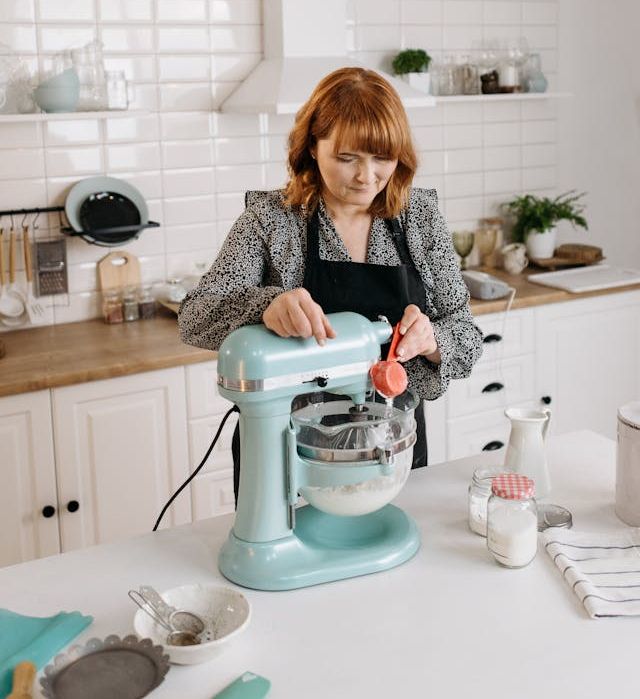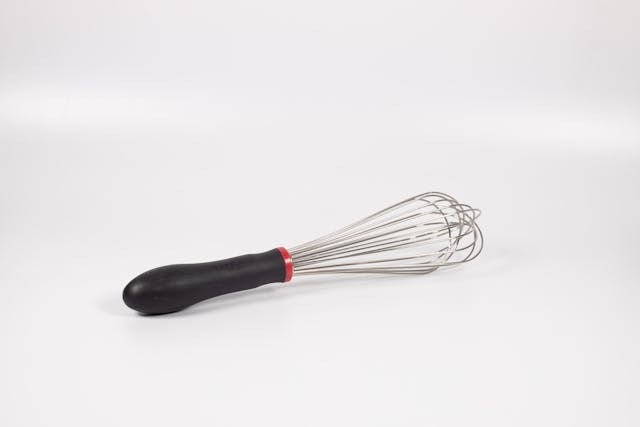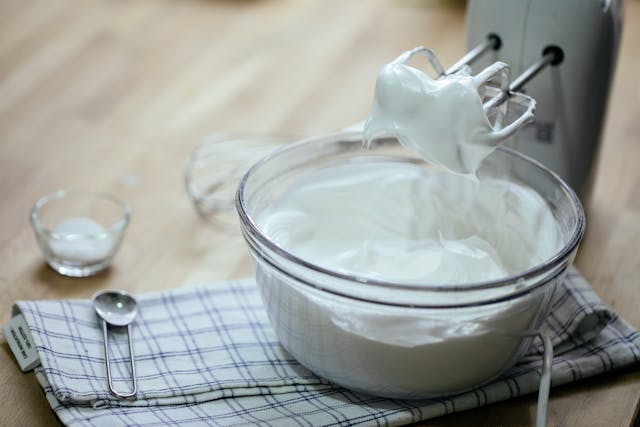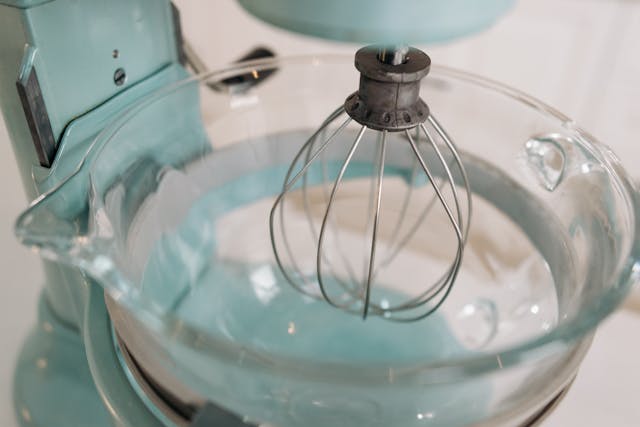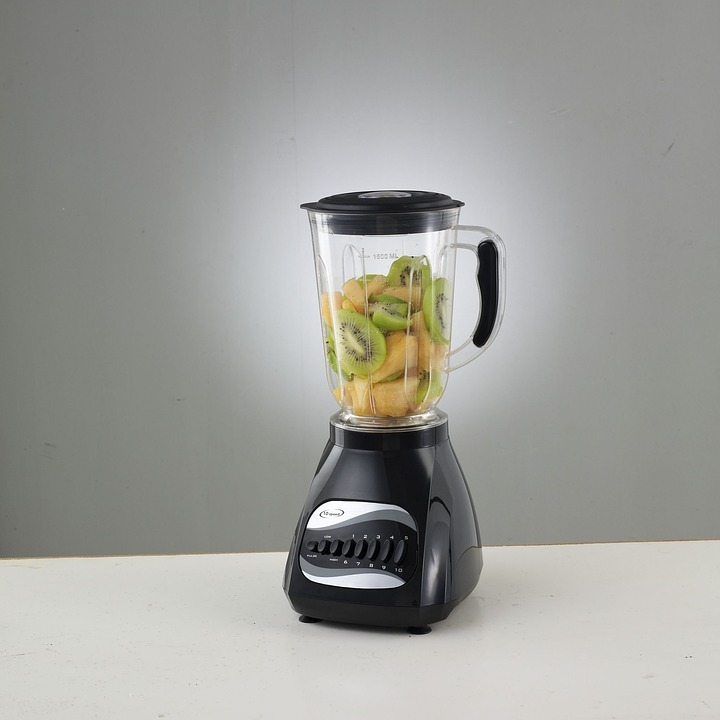Cooking often requires the careful blending of ingredients to create dishes that are as delightful to the palate as they are to the eye. Mixers, both stand and hand-held versions, have become invaluable tools in the kitchen, simplifying tasks that traditionally require considerable time and physical effort. They are employed for a variety of culinary endeavors—from whipping up a simple cake batter to kneading heavy bread dough.
One of the primary benefits of using a mixer is its ability to uniformly combine ingredients, ensuring a smooth and consistent texture in recipes. This uniformity is particularly crucial for tasks like emulsifying mayonnaise or aerating a mousse, where the outcome hinges on fine textural details. Furthermore, for recipes requiring endurance and strength, such as kneading bread dough, mixers can perform the task with ease, saving both energy and time.
However, the use of mixers does not come without challenges. The initial cost and the counter space they occupy can be significant, potentially posing a hurdle for a home kitchen. Moreover, learning to use the various attachments and functions of a mixer can be daunting for novices. Care must be taken to ensure that over-mixing does not occur, leading to undesired results, such as tough pastries or breads. Hence, while mixers offer convenience and precision, they also demand a certain degree of skill and understanding to be used effectively.
Overview of Cooking Mixers
In the culinary world, mixers have become an essential tool for both home cooks and professional chefs, streamlining the preparation of a wide range of dishes.
Types of Mixers
Mixers fall into two main categories: stand mixers and hand mixers. Stand mixers are typically more robust with a stationary design—the KitchenAid is a notable example, often considered a benchmark for quality. These mixers come equipped with a dedicated stand and a motorized base that powers various attachments. Hand mixers, on the other hand, are smaller, handheld devices that offer portability and convenience for quick tasks.
Common Uses in the Kitchen
Mixers, whether stand or hand, serve a multitude of purposes in the kitchen:
- Mixing: Quickly combining ingredients for batters, doughs, and mixes.
- Kneading: Effortlessly kneading bread dough with attachments like dough hooks.
- Whipping: Creating voluminous whipped cream or egg whites with a whisk attachment.
Stand mixers, due to their stability and power, excel at heavier tasks like kneading thick doughs, while hand mixers are perfect for lighter mixing tasks that require more control.
Advantages of Using Mixers
Mixers bring to the kitchen a level of efficiency and convenience unparalleled by manual mixing methods. They offer ease of use and versatility that significantly enhance the cooking and baking process.
Enhanced Mixing Efficiency
A stand mixer excels in its ability to handle heavy doughs and intricate batters efficiently. With a powerful motor, it ensures that mixtures are blended thoroughly and consistently, providing even textures and flavors. The hands-free aspect is a significant advantage, allowing users to focus on other tasks while the mixer does the work, thereby saving time and energy for the cook.
- Time-saving: Mixers work quickly to blend ingredients, reducing preparation time.
- Energy-efficient: They require less manual effort, lessening the physical strain on the user.
- Consistency: Achieve uniform mixing with minimal effort, ensuring consistent results.
Diverse Cooking Attachments
The versatility of mixers is further broadened by the array of available attachments:
- Whisk: Perfect for aerating mixtures, including whipped cream and egg whites.
- Beater: Ideal for general mixing, such as combining cake batter.
- Dough hook: Designed to knead bread doughs, it offers convenience and superior results for bakers.
These attachments enhance the mixer’s functionality, transforming it into a multipurpose tool suitable for various tasks beyond just mixing – from kneading bread to whipping cream. Each attachment is built to perform specific tasks that can cater to the needs of an array of recipes and preparation styles.
Impact on Cooking and Baking
Mixers have revolutionized the preparation of food, particularly in baking where uniform texture and consistency are paramount, and in advancing cooking skills through efficient technique. They have a notable influence on health outcomes due to changes in food composition during mixing.
Improvement in Baking Results
Cake Batter: A mixer ensures that cake batter achieves a uniform consistency, which is crucial for even baking. By using a mixer to aerate batter, bakers can expect lighter and fluffier cakes. Incorporation of air increases volume, making the cake rise properly.
Frosting: When it comes to frosting, a mixer can produce a smooth and creamy texture that is difficult to achieve by hand. It also helps to evenly distribute flavors and colors throughout the frosting, resulting in a professional and appealing finish.
Advancing Cooking Skills
Education: Cooking skills are enhanced with mixers as they allow chefs and home cooks to tackle more complex recipes that require precise mixing, such as emulsifications or doughs. Mixers serve as an educational tool, supporting the learning of advanced culinary techniques.
Cooking Skills Automation: They simplify tasks such as kneading dough or whipping cream, which can be labor-intensive and require significant physical effort. This automation frees up time, allowing cooks to focus on refining other techniques or multi-tasking in the kitchen.
Influence on Health Outcomes
Mixers impact health outcomes by promoting homemade cooking, which can lead to a reduction in processed food consumption. The ability to control ingredients can result in healthier choices, like reduced sugar in cakes or lighter options for frosting.
Nutrient Preservation: Furthermore, some mixers are designed to preserve more nutrients during the food preparation process due to their specific mixing techniques, which can be beneficial for overall health.
Challenges of Mixer Use
While mixers can significantly enhance the efficiency of food preparation, users often face several challenges that can affect the operation and longevity of the tool.
Operational Difficulties
Mixers can sometimes pose operational challenges during food preparation. For instance, users must ensure the distribution of ingredients is even, as this impacts the quality of the mix and prevents issues such as segregation or uneven texture. Moreover, precise timing and control of the mixing process are crucial; too little mixing can lead to a lack of cohesion among ingredients, while too much can result in overworking the mixture, affecting texture and consistency.
- Labor: Continuous user intervention may be required to scrape the bowl and adjust settings, adding to the labor intensity of tasks.
- Power: Mixers demand a considerable amount of electrical power to operate, which can be a concern for energy-conscious users or those in settings with limited power access.
Maintenance and Cleanup
After use, mixers necessitate proper maintenance and cleaning to ensure sanitation and functionality.
- Clean-up: Thorough cleaning of mixers is essential to avoid food contamination and prolong equipment life. This may include the removal and cleansing of attachments and bowls, which can be labor-intensive.
- Storage: Proper storage of mixers and their accessories is crucial but can be challenging due to their often bulky nature. Efficient storage solutions are key to maintaining a clutter-free kitchen space.
Financial Considerations
Investing in a mixer for cooking purposes presents financial implications that should be carefully assessed. These considerations hinge upon a thorough cost-benefit analysis and the evaluation of the mixer’s durability and potential for long-term use.
Cost-Benefit Analysis of Mixer Investment
When considering the purchase of a mixer, it’s crucial to measure the upfront costs against the benefits. A comprehensive review should be conducted to determine if the mixer provides value through efficiency gains and improved product quality. Increased performance on high-speed production lines, for instance, can justify the initial investment by enhancing output rates and reducing manual labor costs. Users should carefully examine cost details, such as:
- Initial purchase price
- Expected savings in manual labor
- Potential for increased production volume
- Enhanced consistency and product quality
Longevity and Durability
A mixer’s cost-effectiveness further extends to its longevity and durability. These factors determine the investment’s amortization over time. A durable mixer may carry a higher price tag but it can lead to lower maintenance costs and fewer replacements. Key points to consider include:
- Material and build quality
- Manufacturer’s warranty
- Availability and cost of spare parts
- Historical durability reviews from other users
A durable and well-built mixer can provide years of reliable service, thereby lowering the total cost of ownership despite a potentially expensive initial purchase.
Recipes and Ingredients Specifics
In the realm of cooking, precision in handling recipes and ingredient specifics can make or break a dish, particularly when it comes to the texture and consistency of doughs and creams. A mixer’s role is distinguished in recipes where the blending of ingredients needs to be even and thorough.
Dealing with Heavy Doughs
When one tackles heavy doughs, such as those for bread or pizza, a stand mixer equipped with a dough hook is invaluable. It distributes the yeast evenly and develops the gluten without the physical strain of hand kneading. This allows bakers to consistently work with recipe ratios that call for dense ingredients like flour and butter, where a mixer’s power can handle the required stiffness of the dough without overworking it.
For heavy batters, it’s crucial to ensure that the mixer’s settings are appropriate for the task:
- A low to medium setting prevents overmixing
- Time of mixing should align with the recipe’s demand to avoid overdeveloping the gluten
Maintaining these specifics leads to a perfectly risen and textured final product.
Whipping and Creaming Techniques
Mixers excel in the realms of whipping and creaming, essential techniques for items ranging from cakes to mousses. The process of creaming butter with sugar until it’s light and fluffy is foundational for many baked goods, as it incorporates air and gives structure to the final product.
Key considerations for optimal whipping and creaming include:
- Temperature: Butter should typically be at room temperature for effective creaming.
- Speed: A medium to high speed facilitates the incorporation of air.
For whipping egg whites or cream:
- Ensure that the mixing bowl and whisks are clean and free from any grease.
- When beating egg whites, a gradual increase in speed allows for stable foam formation.
Adhering to these technique specifics ensures a desired airy and light texture in recipes like meringues or whipped cream.
Consumer Guide to Choosing a Mixer
When selecting a mixer, the consumer should consider the appliance’s specifications and how they align with personal cooking needs. Features such as power, speed settings, and functionality directly impact the mixer’s ability to perform various mixing tasks.
Understanding Mixer Specifications
Powerful Motor:
A mixer’s motor power, typically measured in watts, indicates its ability to handle heavy doughs and dense mixtures. Higher wattage often correlates with more robust performance.
Speed Settings:
Varying speed options provide versatility. Most mixers offer at least three settings:
- Low speed minimizes splatter when starting to mix.
- Medium speed is suitable for continuous mixing.
- High speed is reserved for tasks like whipping cream or egg whites.
Functionality & Attachments:
The right attachments can extend the mixer’s capabilities. Common ones include:
- Dough hooks for kneading.
- Paddles for standard mixing.
- Whisks for aerating mixtures.
Assessing Personal Cooking Needs
Frequency of Use & Types of Mixtures:
Consumers should evaluate how often they’ll use the mixer and for what kinds of recipes. Those who bake frequently may benefit from a stand mixer with a large capacity and substantial motor. Casual bakers might prefer a hand mixer for its portability and convenience.
Review & Evaluation:
Reading consumer reviews and product ratings can provide insights into a mixer’s performance and reliability. Reviews often highlight both strengths and areas for improvement, informing the buyer’s decision.
By thoroughly understanding mixer specifications and assessing personal cooking needs, consumers can choose a mixer that suits their culinary endeavors without succumbing to the allure of unnecessary features.
Dietary and Nutritional Implications
Using mixers in cooking has significant dietary and nutritional implications. These appliances facilitate health promotion by streamlining the food preparation process, making it easier to incorporate a diverse range of foods, including fruits and vegetables, into one’s diet. By simplifying tasks such as chopping and blending, individuals may find themselves more inclined to prepare healthy, home-cooked meals rather than opting for convenience fast food options.
Consistent use of mixers could potentially improve dietary intake quality. For individuals focused on nutrient retention, mixers can blend fruits and vegetables efficiently, ensuring that the nutritional content is preserved in smoothies, purees, and soups. This can enhance the intake of vitamins, fiber, and antioxidants.
However, there is also a challenge to consider. With the ease of mixers, there’s the risk of over-reliance which might lead to less traditional methods of food preparation, possibly affecting the skill development in younger generations.
Addressing Obesity:
- Preparation of Low-Calorie Meals: Mixers can aid in the creation of healthier alternatives to calorie-dense foods.
- Increased Portion Awareness: Home cooking can lead to a better understanding of portion sizes, which is critical in managing weight.
Encouraging Fruit and Vegetable Intake:
- Encouraging Creativity: The convenience of mixers may encourage people to experiment with different ingredients, boosting their consumption of fruits and vegetables.
- Smoothie-Making: A fun and efficient way to increase daily fruit and vegetable servings.
By thoughtfully integrating mixers into cooking routines, individuals can make substantial strides towards a healthier lifestyle, while being mindful of the potential for over-reliance on these convenient appliances.



